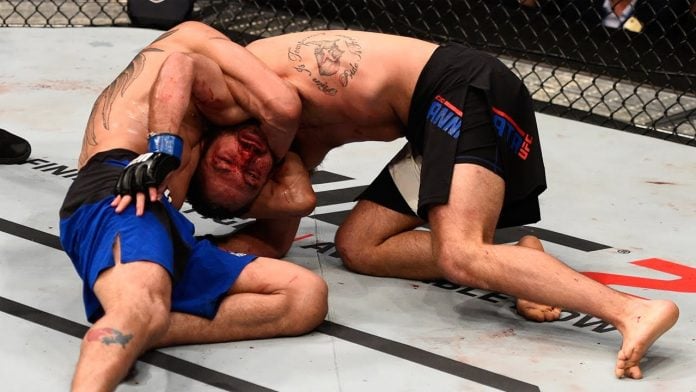
The BJJ Darce choke is by far my personal favorite choke. Moreover, I believe everyone should use this highly versatile choke al to more than they are at the moment. The choke itself is not simple, but still, it is extremely powerful. Moreover, once you get into it, there are so many variations and adjustments to make, you’ll find it really hard to stop looking for the Darce from every possible position. Not to mention that it is actually available from more positions than any other choke.
Brazilian Jiu-Jitsu chokes work. In fact, they just might be the one submission that is universally successful. WE’ve all heard the “nobody can withstand a choke” claim. It is true to a p[oint, but then again, there are also different kinds of chokes. In this choke hierarchy, the BJJ Darce choke is most definitely in the top contenders, if not the undisputed champion in the flesh. And why wouldn’t it be? It works as a choke, it works as a crank, it works with the gi, you can get it from anywhere, you can use it as a position… the list goes on and on.
The Story Of The Darce Choke
The Darce choke has quite an interesting origin story, one made finally made clear by John Danaher. As with most things in Jiu-Jitsu, the real first moment when someone used this move to either control or submit someone is probably lost for all eternity. What we do know, though is that it falls within the category of triangle chokes. We also know that the BJJ Darce choke is done solely with the arms, making it an arm triangle. It is also usually associated with the front headlock position, although this is not a requirement to get to the strangle.
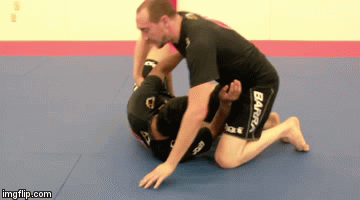
The real history of the choke goes way back, though. The founder of the anaconda choke, a Brazilian by the name of Milton Vieira often credits the choke to himself. He dubbed it the Brabo choke, a name that is still used to describe the BJJ Darcechokeeven today. In essence, they’re both the same choke, and it wasn’t really Milton that figured it out.
As history suggests, it was a Norwegian Luta Livre grappler named Björn Dag Lagerströmstubmoeled across the move when trying an Anaconda and getting it the other way around. The thing I,s that if he did it, so did others probably, that never truly claimed it. So, the real first origin of the Darce choke is hard to pinpoint, but we do know precisely where both the Darce and Brabo names came from. Furthermore, Bjorn called it the BjörnTechnik, or simply the Bear Choke.
Little Known BJJ Darce Choke Details
The Darce choke is an arm triangle from the front headlock position. That is the simplest way to describe the position. It does little though to help out with how to actually perform the BJJ Darce choke. The choke works as an arm triangle but there are a bunch of things you need to do right in order to have a real strangle. If you want to learn the fundamentals of the Darce choke, check out this previous article on BJJ World.
Going deeper into the Darce choke, after 6 years of catching people left and right with it, I have several little tips and tricks to share here. For starters, the arm that goes inside for the choke doesn’t’ need to peak out all the way behind your opponent. Instead, a great rule of thumb is to actually use your thumb. If you can extend your thumb and it is behind the neck, you do not need to go any deeper. This is the perfect position to get the choke.
When it comes to grabbing the other arm, the first thing to focus on is actually making the opponent’s neck bend forward with the arm, before attempting to get a grip. This will allow you to grab deep, given that the triceps is where you want your palm to grip, and not the biceps. Extending the arm towards the back of the opponent and twisting it, palm to the ground will help you get that grip even better.
Finally, for the finish, don’t think about squeezing. Instead, try and get your elbows together, while you retract your shoulder blades. Then, puff out your chest as this will get you plenty of taps. If an opponent is still resisting, just got o knee on belly or mount without changing the configuration of the choke and you’ll quickly start putting folks to sleep.
BJJ Darce Choke Variations
Now, there are plenty of variations of the BJ JDarce choke out there, but I’ll focus on a few that really work. In that sense. I’ll be sharing variations of the choke itself, rather than different entries or setups from different positions. The thing you need to know is that it doesn’t matter how long your arms are, or how strong your grips are. None of that matters if you figure out the right Darce choke variation for you. Here are some of the best:
The Marce
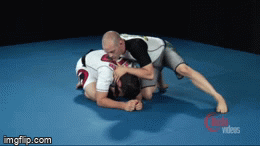
The premise here is that you have the arm inside for the choke, but can’t really turn an opponent over with the palm to palm grip. When that happens, simply do a sit out, with your near side leg going underneath. The main thing here is to re-adjust, and actually lock up a Darce choke grip the moment you feel your opponent’s losing their base. In other words, that’s the moment your hip touches the floor. From there on, the finish will require you to think about crunching your opponent up, rather than squeezing. Just focus on trying to get their chin to touch their belly button and you’ll get taps every time.
Short Arm Darce Strangle
This is the variation that actually helped me learn how the BJJ Darce chokes works. I, for one, do not have particularly long limbs, especially arms. However, even fro those that are, sometimes opponents just have shoulders that are too wide or necks that are too strong. The moment you realize you can’t get the triceps grip properly, you’re left with just one option – the short arm Darce.
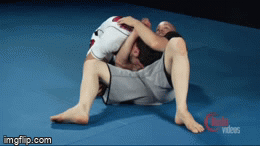
The Farce
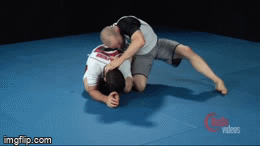
The idea is that the far side armpit is usually always open when opponents focus on defending a Darce. Instead of having to grip fight endlessly, you simply throw the top arm under the opposite side armpit, while jumping over and doing half a front roll, sticking your arm through and ending up straight into a Marce choke.
The Slarce
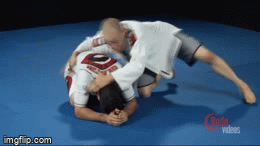
The Gi Brabo
The full Gi version of the choke works when you decide to use the lapel instead of your arm. This version of the choke allows you even more variety, as you can even set it up form the closed guard,.wich is not the case with No-Gi variations of the BJjDarce choke.
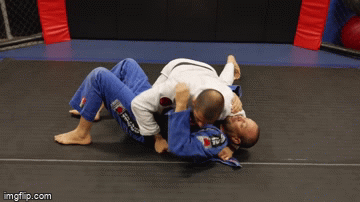
A Step Further: The Japanese Necktie
Last but not least, a throwback, if you will, to the moments when a BJJ Darce choke feels like a neck crank. The Japanese necktie ist the perfect gray area between a choke and a crank. It is legal, it is a choke when done right and a crank when done slightly differently. In any case, nobody is immune to it and it just os happens to be the BJJ Darce Choke’s best friend and neighbor.
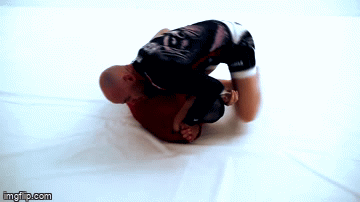
What you get with this is two things – first, you can finish with the Japanese necktie, either via choke or crank. Alternatively, you can use the position to set up the Darce choke grip and return to finishing your initial attack. This combo works like a loop, meaning you don’t’ have to ever release an opponent in order to achieve a tap.
In Conclusion
The BJJ Darce choke is a powerful weapon to use. I discovered it as a way to deal with underhooks from people playing half guard. Suffice to say, it worked. It also got me interested in the choke, so I dug deeper. These variations of the Darce choke ara just some of the possibilities that you can mess around with when you’re looking to choke people from anywhere. And, by anywhere I do mean every possible BJJ position, from your closed guard to having someone on your back. But that is a subject for a future BJJ Darce choke article.


![Darce Choke Encyclopedia – Origins, Mechanics and Variations [2025] BJJ, choke, Brabo, BJJ Darce Choke, D'arce Choke, Darce BJJ Choke](https://bjj-world.com/wp-content/uploads/2017/11/JungPoirierLeeYahoo-218x150.jpg)









![Closet Closed Guard Craig Jones DVD Review [2025] Closet Closed Guard Craig Jones DVD Review](https://bjj-world.com/wp-content/uploads/2025/03/closet-closed-guard-craig-jones-dvd-review-218x150.png)
![Xanadu Back Takes Levi Jones-Leary DVD Review [2025] Xanadu Back Takes Levi Jones-Leary DVD Review](https://bjj-world.com/wp-content/uploads/2025/03/xanadu-back-takes-levi-jones-leary-dvd-review-218x150.png)

![No-Gi Grapplers Guide To Front Headlock Joel Bane DVD Review [2025] No-Gi Grapplers Guide To Front Headlock Joel Bane DVD Review](https://bjj-world.com/wp-content/uploads/2025/03/no-gi-front-headlock-joel-bane-dvd-review-218x150.png)

![Get Off My Legs Gringo Craig Jones DVD Review [2025] Get Off My Legs Gringo Craig Jones DVD Review](https://bjj-world.com/wp-content/uploads/2025/03/get-off-my-legs-gringo-craig-jones-dvd-review-218x150.png)
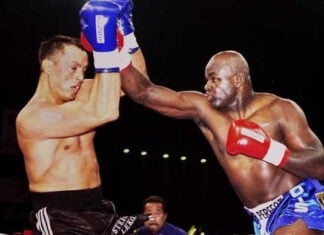
![Osoto Gari for Jiu Jitsu Jackson Nagai DVD Review [2024] Osoto Gari for Jiu Jitsu Jackson Nagai DVD Review](https://bjj-world.com/wp-content/uploads/2024/10/osoto-gari-for-jiu-jitsu-jackson-nagai-dvd-review-100x70.png)


![Miko Hytonen Lapel Chokes From Everywhere DVD Review [2024] Miko Hytonen Lapel Chokes From Everywhere DVD Review](https://bjj-world.com/wp-content/uploads/2024/10/miko-hytonen-lapel-chokes-from-everywhere-dvd-review-100x70.png)

![Breaking Their Guard Mikey Musumeci DVD Review [2025] Breaking Their Guard Mikey Musumeci DVD Review](https://bjj-world.com/wp-content/uploads/2025/02/breaking-their-guard-mikey-musumeci-dvd-review-100x70.png)
![360 Degrees Guard Retention Thiago Abud DVD Review [2024] 360 Degrees Guard Retention Thiago Abud DVD Review](https://bjj-world.com/wp-content/uploads/2024/10/360-degrees-guard-retention-thiago-abud-dvd-review-100x70.png)

![Intro To Hip Mobility for Guard Players Joshua Presley DVD Review [2024] Intro To Hip Mobility for Guard Players Joshua Presley DVD Review](https://bjj-world.com/wp-content/uploads/2024/09/hip-mobility-for-guard-joshua-presley-dvd-review-100x70.png)
![Don’t Stand Up Chris Wojcik DVD Review [2024] Don't Stand Up Chris Wojcik DVD Review](https://bjj-world.com/wp-content/uploads/2024/11/dont-stand-up-chris-wojcik-dvd-review-100x70.png)
![Position And Submission Escapes Craig Funk DVD Review [2025] Position And Submission Escapes Craig Funk DVD Review](https://bjj-world.com/wp-content/uploads/2025/02/position-and-submission-escapes-craig-funk-dvd-review-100x70.png)

![Woj Lock the World Chris Wojcik Ankle Locks DVD Review [2024] Woj Lock the World Chris Wojcik Ankle Locks DVD Review](https://bjj-world.com/wp-content/uploads/2024/12/woj-lock-the-world-chris-wojcik-dvd-review-100x70.png)


![Shin to Shin Eoghan O’Flanagan DVD Review [2025] Shin to Shin Eoghan O'Flanagan DVD Review](https://bjj-world.com/wp-content/uploads/2024/12/shin-to-shin-eoghan-oflanagan-dvd-review-100x70.png)

![Mastering Control From Top Position Trent Hidlay DVD Review [2024] Mastering Control From Top Position Trent Hidlay DVD Review](https://bjj-world.com/wp-content/uploads/2024/11/control-from-top-position-trent-hidlay-dvd-review-100x70.png)

![How To Knee Cut Junny Ocasio BJJ DVD Review [2025] How To Knee Cut Junny Ocasio BJJ DVD Review](https://bjj-world.com/wp-content/uploads/2025/02/how-to-knee-cut-junny-ocasio-bjj-dvd-review-100x70.png)
![Leg Locks From Beginner To Advanced Dan Manasoiu DVD Review [2024] Leg Locks From Beginner To Advanced Dan Manasoiu DVD Review](https://bjj-world.com/wp-content/uploads/2024/12/leg-locks-from-beginner-to-advanced-dan-manasoiu-dvd-review-100x70.png)

![Trip Throw Dilemma Michael Pixley and Heath Pedigo DVD Review [2024] Trip Throw Dilemma Michael Pixley and Heath Pedigo DVD Review](https://bjj-world.com/wp-content/uploads/2024/10/trip-throw-dilemma-michael-pixley-dvd-review-100x70.png)
![Slip N Slide Into Victory Julián Espinosa DVD Review [2025] Slip N Slide Into Victory Julián Espinosa DVD Review](https://bjj-world.com/wp-content/uploads/2025/01/slip-n-slide-into-victory-julian-espinosa-dvd-review-100x70.png)


![Special K Guard Neil Melanson DVD Review [2025] Special K Guard Neil Melanson DVD Review](https://bjj-world.com/wp-content/uploads/2025/03/special-k-guard-neil-melanson-dvd-review-100x70.png)
![Forging The De La Riva Guard Giancarlo Bodoni DVD Review [2025]](https://bjj-world.com/wp-content/uploads/2025/02/de-la-riva-guard-giancarlo-bodoni-dvd-review-100x70.png)